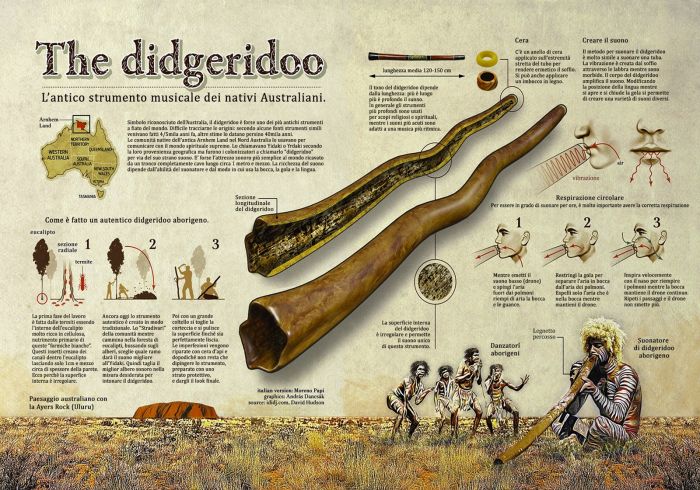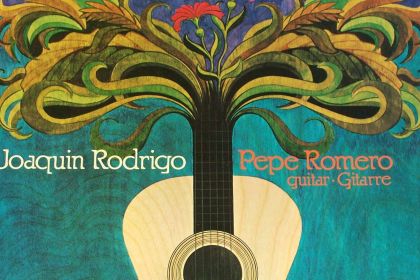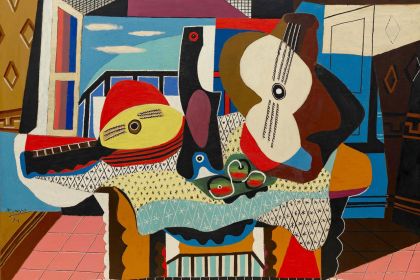ORCHESTRA
The didjeridu and Indigenous Australian chants interpolated into classical music by Peter Sculthorpe

Peter Sculthorpe by Eric Smith
Music Period: 20st Century Classical
Country: Australia
Peter Sculthorpe was an Australian composer who sought to express the traditional Indigenous culture and unique nature of the continent in his music. In order to portray the wide horizons and contrasting landscapes of the land, he avoided atonality and serialism that were so popular at the time and stirred away from the compositional methods of the 19th century which he considered obsolete and unsuitable for his mission.
To convey the mood of Indigenous songs and imitate nature sounds, Sculthorpe searched for unusual timbral effects of the string section, created authentic percussion rhythms, and introduced Aboriginal musical instrument didjeridu.
The didjeridu is one of the oldest wind instruments that appeared in northern Australia about a thousand years ago. A wooden pipe made from a hollow eucalyptus trunk measures between one and three meters in length and produces one low drone-like tone that a skilled performer can change within a third.
Performing on the didjeridu requires a special circular breathing technique that some gifted western musicians, including Rahsaan Roland Kirk and Dana Colley, have adopted for simultaneous and continuous performance on several wind instruments. In classical music, the didjeridu is used mostly as an organ point, a technique that came from early organ music when the lowest note of a score is played continuously for several measures.

In 1986, Peter Sculthorpe completed his first piece for the didjeridu and orchestra entitled Earth Cry following the success of which the composer added the didjeridu parts to his quartets No. 12 From Ubirr, No. 14 Quamby, No. 16, and No. 18.

In 1986, Peter Sculthorpe completed his first piece for the didjeridu and orchestra entitled Earth Cry following the success of which the composer added the didjeridu parts to his quartets No. 12 From Ubirr, No. 14 Quamby, No. 16, and No. 18.
Listen to Peter Sculthorpe's Earth Cry performed by Michael Christie with Queensland Symphony Orchestra featuring William Barton on the didjeridu:
Among Sculthorpe's compositions based on the enchanting melody of old tribal songs of the indigenous people of Australia, the most popular is Djilile arranged by the composer himself in various ways that include versions for viol consort, percussion ensemble, and piano.
Here is Sculthorpe's note accompanying the score:
This is one of a number of landscape-inspired works which I have based upon the Indigenous Australian chant 'djilile' meaning 'whistling duck on a billabong'. The chant, in its original form, was collected by Professor A. P. Elkin during a field trip to Arnhem Land in the late 1950s. While it is still sung today, I have found that aborigines in the area do not seem to recognize it in any kind of instrumental form. To them, it appears only when it is sung, a quite wondrous concept.
Listen to the classical guitar version of Peter Sculthorpe's Djilile performed by John Williams:
Structurally, Sculthorpe’s music is reminiscent of tone poems from the early 20th century which he shaped with a wide range of influences—not only taking inspiration from Aboriginal music but also from English pastoralism, minimalism, and Japanese and Indonesian traditions.



